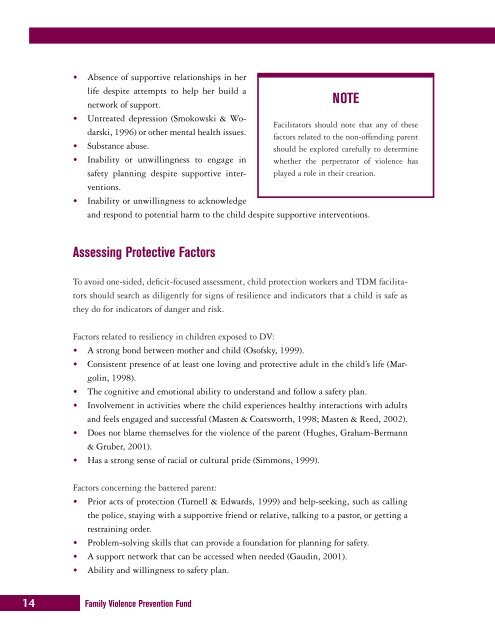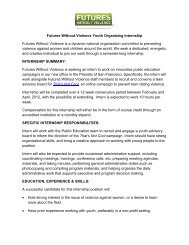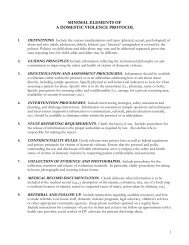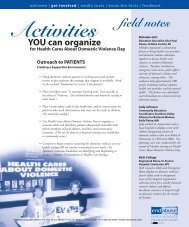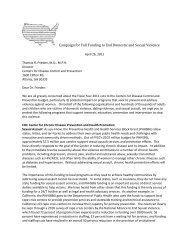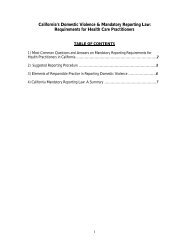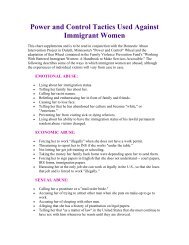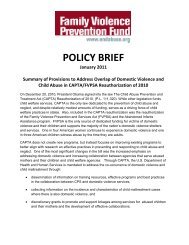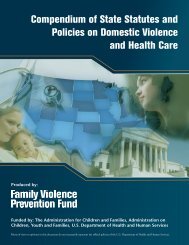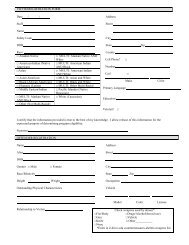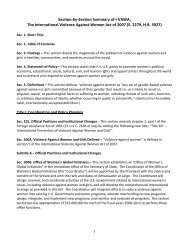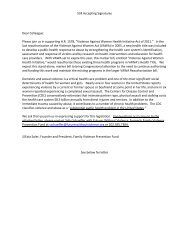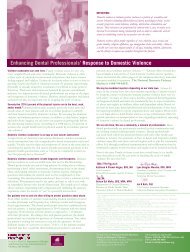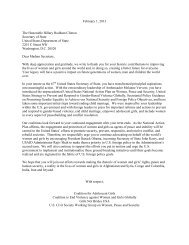Team Decisionmaking and Domestic Violence: Guidelines for ...
Team Decisionmaking and Domestic Violence: Guidelines for ...
Team Decisionmaking and Domestic Violence: Guidelines for ...
You also want an ePaper? Increase the reach of your titles
YUMPU automatically turns print PDFs into web optimized ePapers that Google loves.
• Absence of supportive relationships in her<br />
life despite attempts to help her build a<br />
network of support.<br />
• Untreated depression (Smokowski & Wodarski,<br />
1996) or other mental health issues.<br />
• Substance abuse.<br />
• Inability or unwillingness to engage in<br />
safety planning despite supportive interventions.<br />
• Inability or unwillingness to acknowledge<br />
<strong>and</strong> respond to potential harm to the child despite supportive interventions.<br />
Assessing Protective Factors<br />
To avoid one-sided, deficit-focused assessment, child protection workers <strong>and</strong> TDM facilitators<br />
should search as diligently <strong>for</strong> signs of resilience <strong>and</strong> indicators that a child is safe as<br />
they do <strong>for</strong> indicators of danger <strong>and</strong> risk.<br />
Factors related to resiliency in children exposed to DV:<br />
• A strong bond between mother <strong>and</strong> child (Osofsky, 1999).<br />
• Consistent presence of at least one loving <strong>and</strong> protective adult in the child’s life (Margolin,<br />
1998).<br />
• The cognitive <strong>and</strong> emotional ability to underst<strong>and</strong> <strong>and</strong> follow a safety plan.<br />
• Involvement in activities where the child experiences healthy interactions with adults<br />
<strong>and</strong> feels engaged <strong>and</strong> successful (Masten & Coatsworth, 1998; Masten & Reed, 2002).<br />
• Does not blame themselves <strong>for</strong> the violence of the parent (Hughes, Graham-Bermann<br />
& Gruber, 2001).<br />
• Has a strong sense of racial or cultural pride (Simmons, 1999).<br />
Factors concerning the battered parent:<br />
• Prior acts of protection (Turnell & Edwards, 1999) <strong>and</strong> help-seeking, such as calling<br />
the police, staying with a supportive friend or relative, talking to a pastor, or getting a<br />
restraining order.<br />
• Problem-solving skills that can provide a foundation <strong>for</strong> planning <strong>for</strong> safety.<br />
• A support network that can be accessed when needed (Gaudin, 2001).<br />
• Ability <strong>and</strong> willingness to safety plan.<br />
14 Family <strong>Violence</strong> Prevention Fund<br />
NOTE<br />
Facilitators should note that any of these<br />
factors related to the non-offending parent<br />
should be explored carefully to determine<br />
whether the perpetrator of violence has<br />
played a role in their creation.


